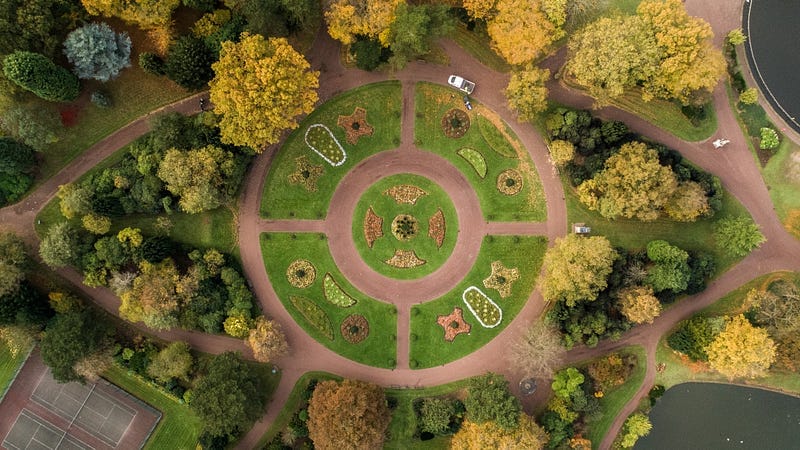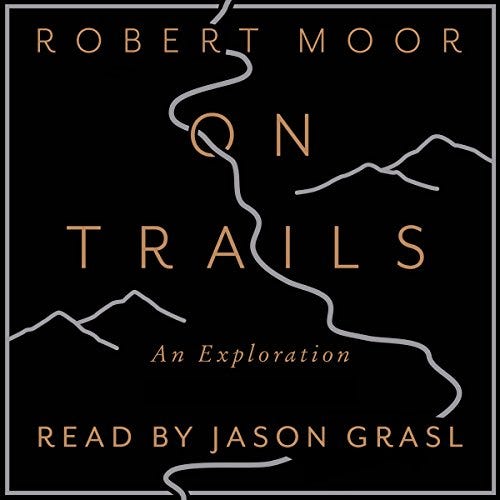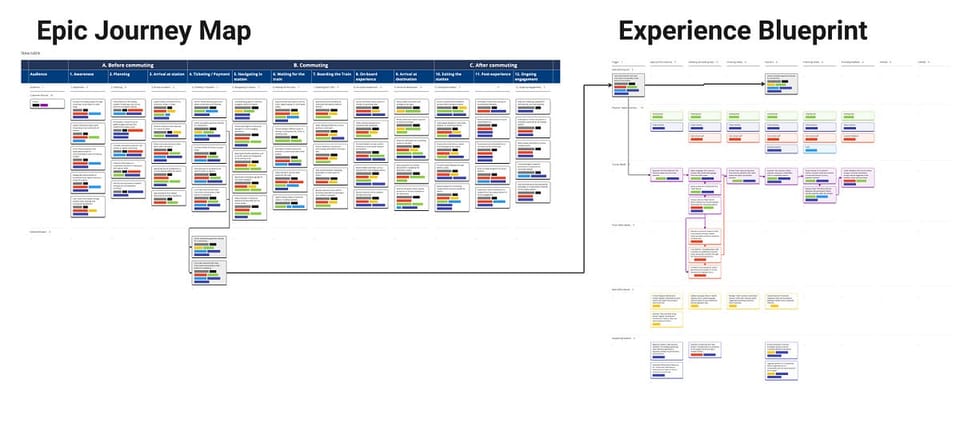Start designing user trails instead of user journeys
A user journey map is the bread and butter artefact to any designer, whether they are in UX/UI, service or systems. Packed with…

A user journey map is the bread and butter artefact to any designer, whether they are in UX/UI, service or systems. Packed with user-centered details, designers and stakeholders heavily rely on the information in the attempt to make informed decisions about a user’s experience of their journeys. Having created plenty of journey maps myself, I have been a firm advocate of the use of these maps. Lately, however, I have been enlightened by the book, On Trails, by Robert Moors, where he went deeper into the trail building and exploration in extreme real life examples.
Designers, this was my “hiking” trip into an alternate multi-dimensional world of journeys, leading me to define journeys as “user trails". As such, I would highly encourage any of us to read this book. Here are my takeaways from the book, as well as how it connects back to our design practices as UX designers (look out for the 🧙♂🧙♀️️).

- There are infinite ways to cross a landscape. A trail is a tactful reduction of options, which is a string of “signs" that can be reliably followed. Without trails, we would be lost. 🧙♂ A user flow is just like the design of a trail. The visual cues are the signs that lead us along the trail.
- The core function of any trail is to connect. A trail strings a line between a walker and her destination, uniting the two in an uninterrupted corridor swiftly and smoothly. 🧙♀️️ What is the goal of the user? How can we reduce complexity in the flow, screen and components?
- Whilst there may be a trailblazer, a trail that is never used fades from existence. Long-lasting trails, then, must be of use. Followers play an equally important role in creating a trail collectively. 🧙♂ This is where design debt kicks in. Having too much design debt could cause interia to a new release, but having no design debt means no one is using the solution. Conduct early user testing to find the right balance of usage.
- Wise trail builders sculpt with desire, not against it. “Desire lines” emerges based on the basic instinct to seek the path of least resistance. Thus a trail continuously changes, depending on how, or whether, their followers elect to use them. 🧙♀️️ Conduct heatmap click analytics and observations. Sometimes, the least expected behaviour may emerge from such findings.
- An explorer finds a worthwhile destination; then every walker who follows that trail makes it a little better. Hurried walkers make straighter paths and leisurely walkers make curvier ones, just as some societies seek to maximize profit while others strive to maximize equality, or military might, or gross national happiness. 🧙♂ No one size fit all solution truly exist. Design based on the underlying needs of the various personas using your solution.
- Everyone optimizes. Nonhuman animals, like ants, achieve this not through superhuman intelligence, but through sheer persistence of straightening. In this manner, trail networks of incredible efficiency can arise simply, organically, iteratively, without any forethought necessary. 🧙♀️️ Iteration and refactoring of the user experience is needed to further smoothen out any user experience.
- In contrast, humans have learned to optimize beyond the shape of the trail and the limits of our anatomy; technology. 🧙♂ How might we use new technology in the work we do? Could AI and automation help in the design process, allowing us to focus on more important and creative endeavor?
- Techscape are formed when new connections are widely adopted. We then create more technology to adapt to the existing technologies. The smartphone is one such example. 🧙♀️️ Case in point when it comes to UX design from web to native app. What about ambient computing?
- The basic mechanism at work here is the feedback loop: cause leads to effect (an ant finds food, and deposits a trail as it returns to the nest), then that effect becomes a new cause (that trail attracts more ants), which then leads to an amplified effect (they lay down their own trails, recruiting more ants), ad infinitum. 🧙♂ Nir eyal’s hooked model at work with nature. Design triggers and cues need a cause and effect too.
- It’s only once an initial best guess is made, and others follow it, that a trace begins to evolve into a trail and grows. Crowds of perfectly average people can collectively make judgments that rival those of the most highly regarded experts. This is called collective intelligence. 🧙♀️️ Hallmark statement of why we conduct early usability testing, especially for new ideas. Do you have the right problem solution fit?
- Trails also serve as “a form of societal spatial memory” — a collective, externalized mnemonic system or information that is encoded in a language that can be learned through mental familiarity, symbolic marking or mnemonic pegs. 🧙♂ The existence of universal recognisable symbols and screens, as per Jakob’s law. Avoid reinventing the wheel, designer.
- Humans are, as far as we know, uniquely rich in what we call culture — art, stories, rites, religion, communal identities, moral wisdom — and our trails have grown to reflect this. Sometimes the trails themselves became cultural artifacts, much like pieces of art or religious relics. 🧙♀️️ A good designer does the functional job well. A great designer recognizes the emotional and cultural nuances and capitalizes it.
- To building a sustainable trail, the following is done: study a map of the region to gather a rough idea of where the best route might lie. Next, scout out the route on foot, trying multiple iterations and searching for the most graceful approach. Then, “flagged” each section of the trail, envisioning which trees would need to be cut down. The ultimate aim of trail building: meticulous construction, artfully concealed. 🧙♂ The analogy of a good ux design process
- Although with each innovation, we’re able to get where we want to go faster and more directly, there is a diminishing of our ability to experience the richness of the physical world. The importance of place and context gets replaced with a network of “nodes and connectors”: homes and highways, airports and flight routes, websites and links. 🧙♀️️ A sad and vicious symptom of an all digital experience. Some companies have created connected and extended experience. Spotify is one such example, having various touchpoints.
- The Internet could be strung together as “associative trails.” Largely, this task would fall to trailblazers “who find delight in the task of establishing useful trails through the enormous mass of the common record.” It would be their job to connect massive information thematically, and then to share their trails, like guidebooks.
- With Internet, a higher order of path making emerges — written guides, signposts, maps — which are then linked together by even higher orders of exegetical path making. Knowledge is thus accrued and the world becomes easier to navigate, but new paths must constantly be marked out to simplify the vast wilderness of older paths into something humans can manage. 🧙♂ The emergence of design systems is the evolution of style guides as designing becomes more complex and guides to the guides have to be catered for.
- Path-breaking is a phenomenon common to all living things. When a path becomes overly used, a new person sets off in a new direction. 🧙♀️️ Keep a look out for the innovators. They could be your new business opportunities.
- The wisest trails are a balance of three values: durability, efficiency, and flexibility. The pheromone trails that ants make, for example, brilliantly balance this. The result is a trail that is not just time-tested, as we often say, but in a constant state of world-testing, such that we test multiple theories against the complexity of the world, and then pursue those that work. 🧙♂ Beautiful design principles and mindset when designers go about creating artefacts.



